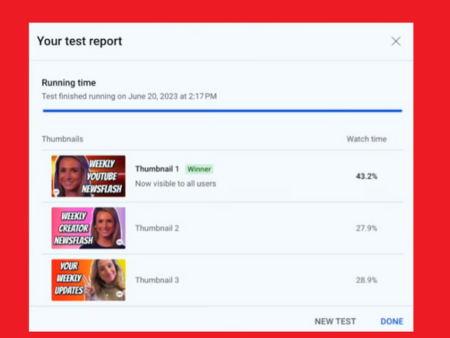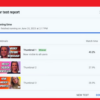Reseller
The Reuters Institute has released its annual review of news consumption trends, which, in many ways, also reflect broader online usage habits, and as such, it includes some valuable points of note for social media marketers that are looking to better connect with their audiences.
The report, conducted in partnership with YouGov, incorporates responses from almost 100,000 internet users, across 52 nations, and includes a heap of in-depth analysis of news engagement trends, as well as people’s views on algorithmic interference, left/right wing bias, criticism of media outlets, etc.
The full report comes in at a whopping 160 pages, so there’s plenty to dig deeper on. You can download the full report here, but in this post, we’ll take a look at some of the high level findings.
First off, the data shows that social media is now the preferred source of news content, overall, in comparison to accessing news publisher websites and apps direct.

As you can see in this chart, that’s especially pronounced in younger user groups, with those under the age of 24 (in the UK in this example) far more likely to rely on social media platforms to get news content, as opposed to visiting a publisher website direct.
That’s not great news for publishing providers, who generally get only a small portion of their referral traffic from social platforms, but this also may not account for those that end up tapping through to articles from a Google Search, for example, which remains the key traffic driver for most.
The data also shows that this behavior varies significantly by region, with users in Asia, Latin America, and Africa more likely to lean on social apps, while Asia-Pacific markets tend to turn to news aggregator sites, like Yahoo, to stay up to date.

This is an important usage shift, which underlines the influence that social apps have in different regions – and it’d be interesting to also measure the health of the local media industry in regions where direct access remains strong, and how they’re driving ongoing support for their local press.
The data also provides some interesting insights into evolving social media usage habits, including this overview of how younger users are shifting their social media attentions over time.

Facebook and Instagram are down, while TikTok and WhatsApp are up, as Snapchat and Twitter usage remains relatively stable (even after Elon Musk’s takeover at the app).
TikTok’s growing influence has been well documented, while the rise of WhatsApp reflects the broader trend away from public sharing, with users now far more inclined to post content in smaller, private groups, as opposed to subjecting themselves to potential scrutiny and judgment by sharing to the main social feed.
The same is also reflected in this chart:

People just aren’t looking to post their own thoughts an opinions at the same rate as they once were, due to reactive angst, potential division, as well as the never-ending memory of the internet, which has left people less inclined to use their social platforms as a means to broadcast their perspective.
That’s driven Meta, in particular, to make messaging a much bigger focus, while Twitter too is now exploring new ways to engage users within DMs, by improving the sharing experience. Meta’s own internal data has shown the same, that fewer people are posting to both Facebook and Instagram than they have in the past, and that trend is likely driving more people to turn to messaging apps, with the enhanced privacy of WhatsApp also offering additional assurance.
This also means that a smaller portion of users are now driving the social media news agenda, as fewer people are actively posting, which is another trend of note within the broader news consumption shift.
It is also worth noting that both Facebook and IG remain very popular overall, so it’s not like they’re dying out as critical drivers of connection. But the trends highlight TikTok’s rising influence, which has become a key entertainment source, along with the decreasing interest in posting for all to see.
This could also be a reflection of Dunbar’s Number theory, which states that humans can only ever maintain meaningful relationships with a maximum of 150 people at a time, no matter how hard we try. As such, there’s really no need to be broadcasting to everyone, or following hundreds of people, because for most, it’s only the smaller groups that you ever maintain any real connection with either way.
The early allure of social media was that we could all have our own broadcast channel, but it seems that, over time, we’re also becoming increasingly aware of the downsides that can come with that, and disinterested in such as a result.
In terms of news consumption specifically, Facebook remains the key driver among social apps, though it has declined significantly in recent years.

As per the report:
“Facebook remains the most important network (aggregated across 12 countries) at 28%, but is now 14 points lower than its 2016 peak (42%). Facebook has been distancing itself from news for some time, reducing the percentage of news stories people see in their feed (3% according to the company’s latest figures from March 2023), but in the last year it has also been scaling back on direct payments to publishers and other schemes that supported journalism. The growth of YouTube as a news source is often less noticed, but together with the rise of TikTok demonstrates the shift towards video-led networks.”
Video, overall, tends to drive more engagement, so it’s no surprise to see both YouTube and TikTok gaining traction here – though that may also raise more concerns about the potential influence that the Chinese Government may or may not have over how TikTok operates.
The report also notes that Twitter usage, as noted, remains strong since Elon took over, with Twitter users also more likely to be actively engaging with news discussion.
“Twitter users are more likely to pay attention to hard news subjects such as politics and business news than users of other networks, whereas TikTok, Instagram, and Facebook users are slightly more likely to consume fun posts (or satire) that relate to news.”
This has always been a key consideration for Twitter. While it might have fewer users overall, those who are actively engaging in tweets tend to be more in touch with the latest information, and are more likely to share their thoughts and opinions on such, which are often then aggregated to other networks. As such, Twitter’s influence is actually more significant than the raw numbers would suggest.
There’s a heap to dig into in the full report, which, again, is 160 pages long, so there’s no way I can do it justice here. If you’re interested in news trends, you’re better off downloading the whole thing, and taking in the specific points of interest.
You can access the full 2023 Reuters Institute Digital News Report here.













